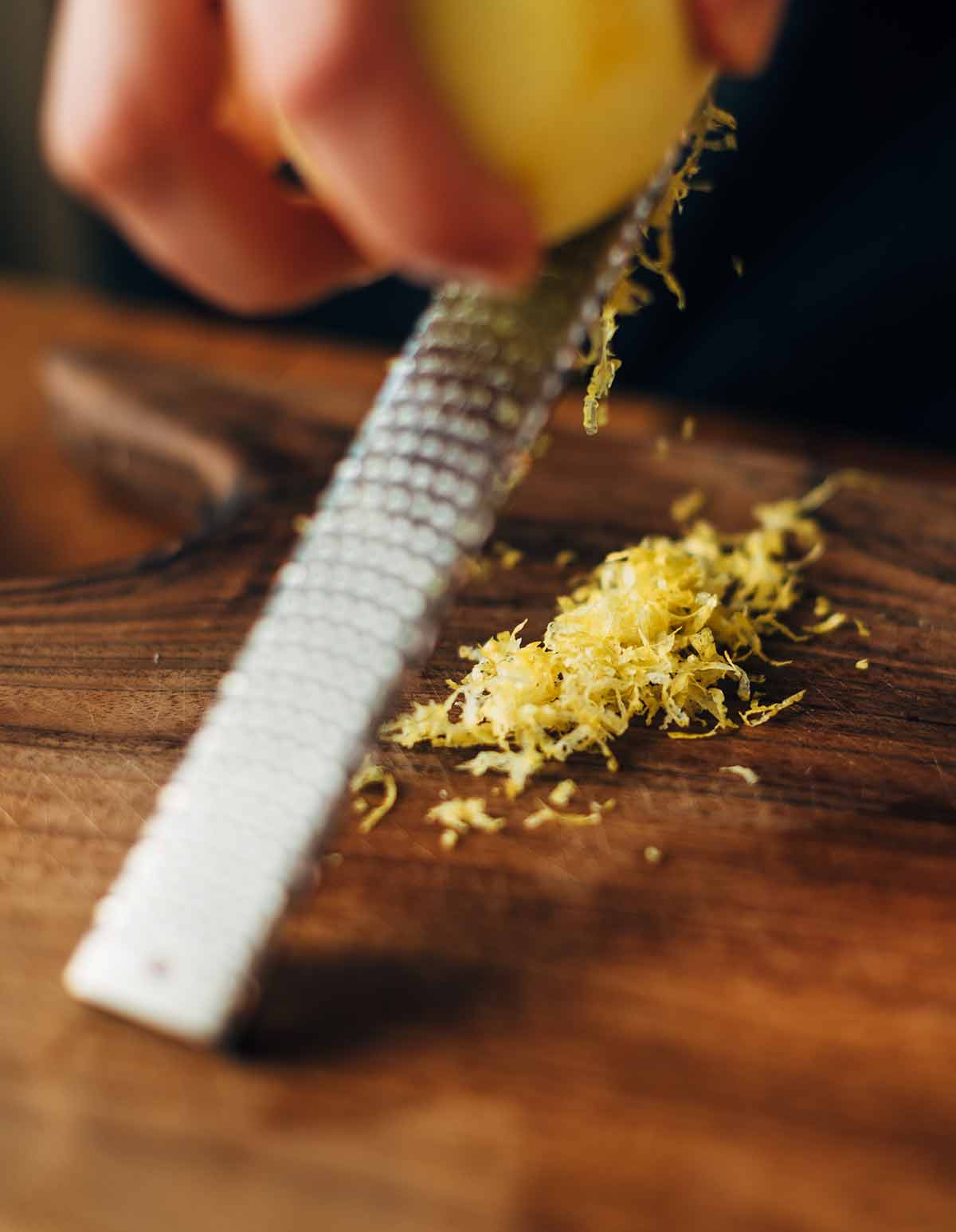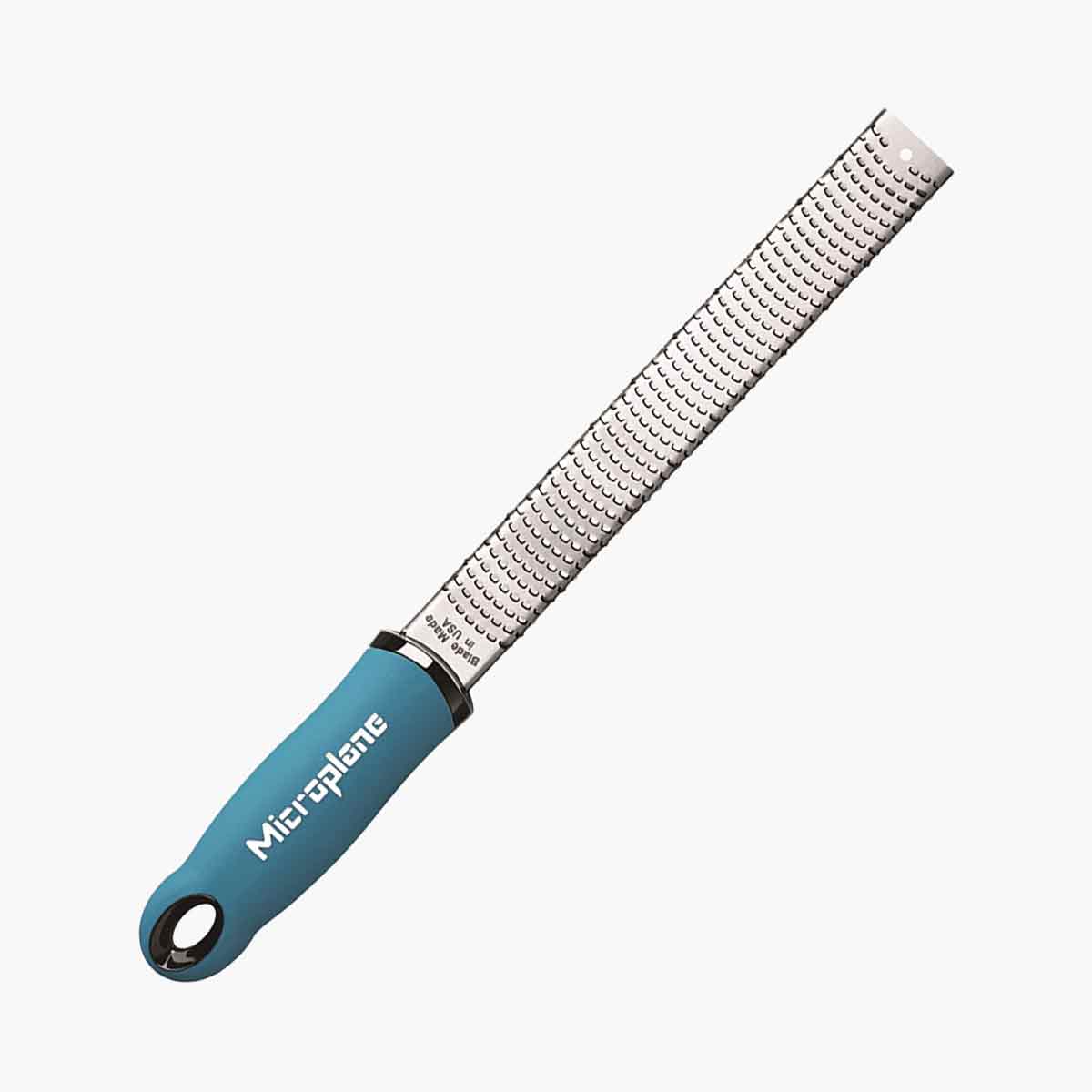
The Wrong Way to Zest Fruit
Just about every baker on the show has held their zester with the teeth facing up (as in the image above). That means they had to zest–one, two, three times—then pick up the fruit to examine what they’d just done and then they turned the fruit over, repositioned it, and zested again. What is wrong with these people?! I shout at my iPad.
To zest fruit the right way [there’s that judge-y word again], turn the zester so the bow or channel is facing up. Now, with your other hand, grab your lemon, lime, orange, or grapefruit—preferably organic, mind you, to avoid all those contaminants that just don’t belong in a body—and zest away. The bow or channel will collect the grated zest in lofty mounds, and you can easily see what you’re doing and can turn the fruit with nary a pause. The best thing is you can zest the whole fruit in one go. (A blessing during lemon curd season.)
My Favorite Citrus Zester

Want to Save This?

Microplane Classic Zester Grater, $32 on Amazon.com
When the Microplane came out in 1990, I laughed. It reminded me of my dad’s old carpentry rasps. A few years later, I bought one. What the hell? I thought. At the very least I could use it to file off the calloused skin on the bottom of my heels. BTW, don’t ever do that–um, so says a friend of mine. [Editor’s Note: Microplane does make a foot file. Just use a light touch.)
What Else Can You Use a Zester For?
I was blown away at how much better it worked than my old box grater. I could whiz through a whole bag of Costco lemons in a snap. In time, I realized it was also perfect for hard cheese, spices, garlic, fresh ginger. horseradish, chocolate, truffles, etc. I love it so much, we have two–one for citrus and one for everything else.
How to Keep a Zester Sharp
All good zesters come with a protective cover. Keeping your zester sheathed when not in use is the best way to keep it sharp. Thin zesters, such as the Microplane, are easily dented, so make sure to wash it by hand as a cycle through the dishwasher exposes it to possible dings from nearby items. And, just like your teeth, these sometimes need brushing. I use a regular stiff-bristled toothbrush that I keep tucked away in my baking drawer to make sure my zester has a dazzling smile.










Thank you for the sharpening tip.
You’re welcome, CherieJ.
The reason the second zester has the little rubber tip at the end is so that you can set that on the counter or the cutting board and zest away. Obviously, you’re still zesting with the fruit on top but once you know what you’re doing you can still whip through it pretty quickly. You just hold it at an angle and run the fruit down it in rows and you’re done before you know it.
Thanks, Missy!
David you are so right. I have read it several months ago and completely forgot about it. Please forgive me.
Isabel, of course!! I know it can be starling for native Portuguese speakers.